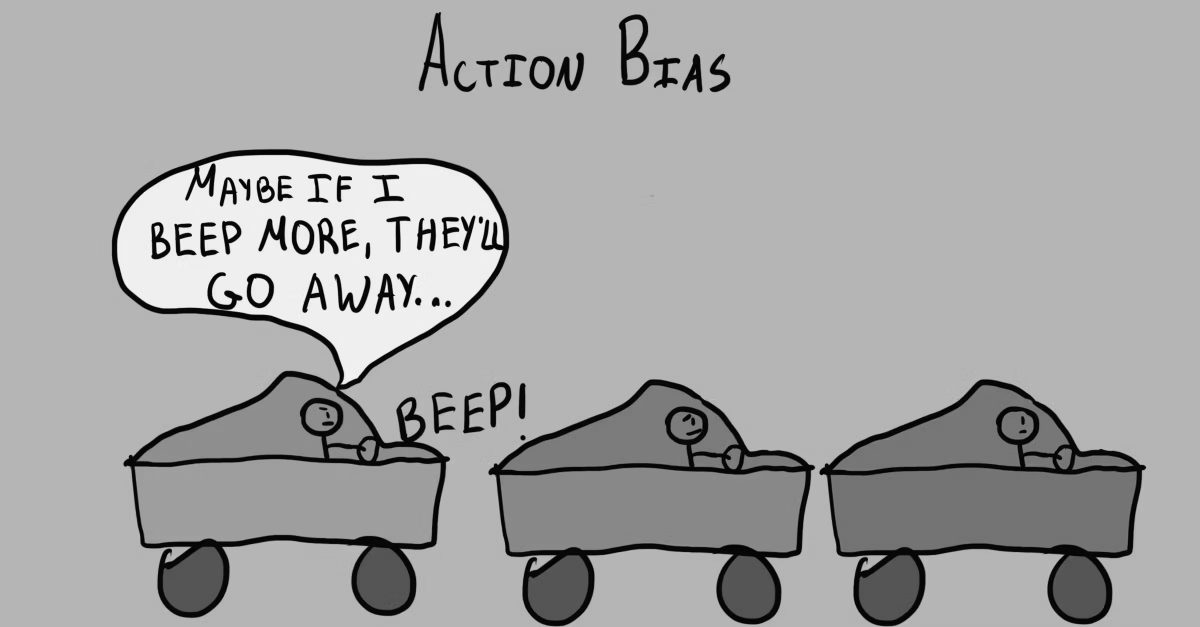Introduction
In the realm of decision-making, there is a pervasive bias known as the Action Bias. It refers to our tendency to favor taking action over inaction, even when inaction may be the more rational choice. Anchored in human psychology, this mental model influences our decision-making processes and has a significant prevalence in our day-to-day lives. This blog post aims to provide a comprehensive understanding of the Action Bias, its relevance in decision-making, its occurrence in various contexts, and practical strategies to mitigate its impact.
Understanding the Action Bias
The Action Bias stems from our desire to feel productive and in control of our circumstances. It compels us to take action rather than remaining passive, even when the best course of action may be to do nothing. This bias is deeply rooted in our evolutionary psychology, where survival often depended on proactive responses to threats and challenges. However, in modern contexts, the Action Bias can lead to irrational decision-making that contradicts our best interests.
Examples of the Action Bias
- Personal Life Decisions: Imagine facing a difficult personal problem that requires careful consideration and analysis. The Action Bias might prompt you to hastily choose a solution, even if it hasn’t been thoroughly evaluated or if there are alternative options that could yield better results. By succumbing to the bias, you risk making impulsive decisions that may have long-term negative consequences.
- Business Scenarios: In the business world, the Action Bias can be observed in investment decisions. Investors may feel compelled to act, buying or selling stocks frequently, even when a more prudent approach would be to maintain a long-term investment strategy. This bias can lead to increased transaction costs, reduced portfolio diversification, and lower overall returns.
- Public Policy-Making: The Action Bias can influence public policy decisions as well. Politicians often face pressure to take immediate action in response to societal issues, even if it means implementing policies that have not been thoroughly evaluated or lack long-term effectiveness. This bias can lead to reactive and shortsighted decision-making that fails to address root causes and creates unintended consequences.
Mental Biases and Underpinnings
Several mental biases contribute to the occurrence and reinforcement of the Action Bias. One such bias is the Illusion of Control, where individuals believe they have more control over outcomes than they actually do. Additionally, the Availability Heuristic plays a role, as vivid and memorable instances of taking action often come to mind more readily than instances of inaction, leading to a bias towards action.
Furthermore, our fear of regret and the social pressure to appear proactive contribute to the Action Bias. We tend to feel regret more strongly when we take action and fail rather than when we choose inaction. Similarly, societal norms often emphasize the importance of being proactive, leading to a bias towards action even when it may not be the most rational decision.
Identifying and Mitigating the Action Bias
- Pause and Reflect: Before making a decision, take a moment to pause and reflect on the situation. Consider the potential outcomes of both action and inaction. By consciously acknowledging the bias and its potential consequences, you can gain a more balanced perspective.
- Evaluate Alternatives: Actively seek out alternative courses of action and evaluate their potential benefits and drawbacks. This helps prevent the rush to act on the first available option and encourages a more comprehensive analysis of the situation.
- Utilize Decision Frameworks: Employ decision frameworks, such as cost-benefit analysis or scenario planning, to objectively evaluate the potential outcomes of different choices. These frameworks provide a structured approach that reduces the influence of bias and promotes a more rational decision-making process.
- Seek Diverse Perspectives: Engage in discussions with others and seek diverse perspectives on the situation. This can help uncover potential drawbacks or alternative solutions that you may not have considered on your own, providing a more comprehensive view of the decision at hand.
Conclusion
The Action Bias compels us to prioritize action over inaction, often leading to irrational decision-making. By understanding the psychological biases that contribute to this bias and adopting practical strategies to mitigate its influence, we can make more objective decisions that align with our long-term goals and best interests. Being aware of the Action Bias and actively working to avoid falling into its trap can lead to more thoughtful, well-considered decisions and ultimately improve our overall decision-making capabilities.
